Greatest Kings of the Court at Wimbledon
Since 1950, the lush lawns of Wimbledon have staged some of the greatest tennis matches of all time.
Many of those battles have been waged on Championship Sunday as two finalists faced off on opposite sides of the net to determine who would claim the vaunted title that year.
Throughout the decades the champions seemed to come in waves from Australia early on, then Sweden, the United States and lately from Switzerland, Spain and most recently from Serbia.
The twelve greatest champions of the past 60 years won multiple titles after working through the draw to reach the final at the All-England Club.
Until recently, most truly successful played serve and volley tennis—a game which seemed unbeatable on grass.
Now, however, base-liners rule Centre Court.
Base-line players supplanted serve and volleyers as the seemingly less aggressive game style dominated, enhanced by new racket technology while the grass surfaces reportedly slowed significantly.
As Wimbledon gets underway in 2012 world No. 1 Novak Djokovic hopes he will capture his second Wimbledon championship.
Rafael Nadal desperately wishes to seize his third title on the grass while Roger Federer anticipates winning the Wimbledon trophy for the seventh time and, in the process, recapture the No.1 ranking.
As usual, the Wimbledon championship is eagerly anticipated with much riding on the outcome.
See whose name is added or moved up on the Wimbledon winners list once the fortnight ends.
12. Roy Emerson (Australia)
Wimbledon Results: (2 Championships, 2 Finals, 81.08 winning percentage)
Roy Emerson was one of the great Aussie tennis pros playing during the 1950s and 1960s.
During his career, the great Emerson won 12 Grand Slam trophies—six Australian Open, two French Open, two US Open and two Wimbledon championships.
Emerson competed in 16 Wimbledon tournaments, winning back-to-back singles titles in 1964 and 1965.
Playing primarily serve and volley tennis on grass, Emerson’s style of play made him a natural on the green lawns of Wimbledon.
Still, the Aussie won the French Open twice, as well as numerous doubles titles on all surfaces.
Emerson held the record for most Grand Slam titles at 12 until Pete Sampras broke his record winning 14 with Roger Federer following with 16.
Emerson remains one of the all-time greats on grass.
11. Lew Hoad (Australia)
Wimbledon Results: (2 Championships, 2 Finals, 82.35 winning percentage)
Lew Hoad was another of the brilliant Aussies who dominated tennis during the fifties and sixties.
Of course, when Hoad was playing, all majors were played on grass except the French Open which was played since the 1920s on the red clay courts of Roland Garros.
Hoad played amateur tennis during the fifties, turning pro in 1957.
During his amateur career, the Aussie won four majors—one French Open, one Australian Open and twice capturing the Wimbledon title in 1956 and 1957.
Hoad was noted for his aggressive play, often going for winners rather than employing patience.
This style endeared him to the public who loved seeing the Aussie diving for balls on the court but confounded his opponents who could never figure out what Hoad would do at any given moment on court.
Hoad won three out of four majors in 1956, losing only the US Open that year to Ken Rosewall.
But like many of his era, Hoad turned pro and was unable to compete any longer on Centre Court at Wimbledon.
But while he graced the grass on Centre Court, Hoad was one of the best.
10. Stefan Edberg (Sweden)
Wimbledon Results: (2 Championships, 3 Finals, 80.33 winning percentage)
If ever there was a player meant to play on grass, it was Swede Stefan Edberg whose career stretched from the 1980s through the 1990s.
Edberg’s last appearance at Wimbledon came in 1996.
His smooth serve and volley style flowed on Centre Court on Championship Sundays from 1988 through 1990.
Edberg reigned victorious in 1988 and in 1990 by defeating Boris Becker.
In the intervening year of 1989, the Swede lost to the German in another hard-fought contest.
The rivalry between Edberg and Becker became one of the great ones in men’s tennis.
Stefan Edberg had a 49-12 career record on Wimbledon grass, winning twice in 14 appearances .
Edberg also won the Wimbledon junior title in 1983 when he became the first player to capture the junior Grand Slam.
Edberg remains one of the great serve and volley players of the 1980s and 1990s whose true genius blossomed on Centre Court at Wimbledon.
9. Rafael Nadal (Majorca/Spain)
Wimbledon Results: (2 Championships, 5 Finals, 87.5 winning percentage)
Rafael Nadal first competed at Wimbledon in 2003, exiting the tournament in the third round.
By 2006, Nadal reached the finals, facing the defending champion, world No. 1 Roger Federer. Federer defeated Nadal in 2006 and 2007.
2008, however, would change that outcome.
After battling for hours, enduring rain delays and descending darkness, Nadal prevailed in the fifth and final set, forever changing the tennis landscape Federer had ruled for the past four and a half years.
No longer would the world regard Nadal as simply a clay-courter. His win at Wimbledon marked the first Grand Slam title not won on clay.
Nadal would win at Wimbledon in 2008 and again in 2010.
In all, he lost twice in finals to Federer and once to Novak Djokovic in 2011.
Nadal’s record going into this year’s Championship is 35-5, winning the Wimbledon title twice in seven tries.
There was never a more determined champion than Nadal whose dedication to winning appears unequaled on Centre Court.
8. Jimmy Connors (United States)
Wimbledon Results: (2 Championships, 6 Finals, 82.35 winning percentage)
Jimmy Connors, always the great competitor, won four different Grand Slam championships on grass including twice at Wimbledon in 1974 and 1982.
He was also the runner-up four times on Centre Court at the All-England Club—losing to Arthur Ashe in 1975, Bjorn Borg in 1977-1978, and John McEnroe in 1984.
At Wimbledon, Connors often found himself facing Bjorn Borg who refused to lose on Centre Court or John McEnroe who proved to be equally as stingy on the green lawns.
In all, Connors won eight Grand Slam titles—five at the US Open, two at Wimbledon and one at the Australian Open.
At the conclusion of his long, illustrious career Connors finished with an 84-18 record at Wimbledon, winning twice in 21 tries.
Connors never gave less than 100 per cent on court, especially when facing men he considered true competitors as he battled his way into six finals on Centre Court.
7. John Newcombe (Australia)
Wimbledon Results: (3 Championships, 4 Finals, winning percentage 76.27)
Australian John Newcombe played tennis in both the Amateur Era and the Open Era. He reached the finals of Wimbledon in 1967, 1969, 1970, and 1971.
Newcombe captured titles on all of those occasions except 1969 when he lost to fellow Aussie, Rod Laver who was on his way to winning his second calendar year grand slam.
In 1967 Newcombe defeated German Wilhelm Bungert 6-2, 6-1, 6-1.
In 1970 and 1971, however, he had to work much harder, going five sets against first Ken Rosewall and then Stan Smith before coming away with his second and third victories.
Newcombe was the last of the great Aussies to dominate in men’s professional tennis.
His serve and volley style of play suited Centre Court at Wimbledon where his aggressive play reaped rewards in the form of three Championships.
Throughout his career, Newcombe won seven Grand Slam singles titles at every venue except the French Open on clay.
All his wins came on grass, playing at a time when all the majors except the French sported grass courts.
Newcombe remains one of the few to win three championships on Centre Court.
6. John McEnroe (United States)
Wimbledon Results: (3 Championships, 5 Finals, 84.29 winning percentage)
John McEnroe became a larger-than-life figure on the grounds of Centre Court in the early 1980s during epic on-court battles with Swede Bjorn Borg and fellow American Jimmy Connors.
McEnroe did not endear himself to British fans and the media during his early days on court. The American’s behavior on court was definitely not to their liking.
As his hair seemed to expand, his temper often exploded during battles with top-notch adversaries as well as umpires and linesmen.
McEnroe’s most memorable finals were in back to back years in 1980 which he lost to Bjorn Borg and in 1981 when he finally defeated Borg who had won five consecutive titles on Centre Court.
Johnny Mac won seven Grand Slam career singles titles with three coming on the green lawns at Wimbledon, finishing his career with a 59-11 career record at the All-England Club.
McEnroe won the Championship three times in 14 tries against some legendary opposition.
5. Boris Becker (Germany)
Wimbledon Results: (3 Championships, 7 Finals, 85.5 winning percentage)
Who could forget when “Boom-Boom” Becker burst onto the stately Wimbledon lawns?
The young German stunned the tennis world by winning his first title in 1985 unranked and unheralded by the media.
Becker was 17 years old at the time.
His hustle and aggressive style of play drew fans to Wimbledon and to tennis in general.
It did not hurt that Becker’s rise to the top of the men’s game was accompanied by fellow German Steffi Graf’s rise in the women’s game.
Becker followed up his first win in 1985 with another title in 1986, defeating Ivan Lendl in the final.
Becker won his last Wimbledon title in 1989 upending defending champion Stefan Edberg.
In all the German appeared in seven Wimbledon finals.
He finished his All-England Club career with a 71-12 cumulative record at the All England Club—winning three times in 15 tries.
4. Rod Laver (Australia)
Wimbledon Results: (4 Championships, 6 Finals, 87.72 winning percentage)
Rod Laver won two calendar year Grand Slams in 1962 and again in 1969—a feat no other man has accomplished since Laver hung up his racket.
The Aussie Laver is regarded by some as the greatest grass court player that ever lived.
Of course, he played most of his career during the time when all majors were played on grass except the French Open.
Laver’s career prior to the Open Era took him out of contention at the majors for five years because only amateurs were allowed to compete at Grand Slam tournaments.
Regardless, the Aussie won Wimbledon four times in 1961-1962 and again during the Open Era in 1968-1969. Laver also reached the finals in 1959-1960.
Many speculate that his Wimbledon title-count might have been greater if not for his absence at the event from 1963-1967; but, we will never know for sure.
Still, Laver’s career record at Wimbledon was 50-7, winning the event four times in 11 tries.
3. Bjorn Borg (Sweden)
Wimbledon Results: (5 Championships, 6 Finals, 92.73 winning percentage)
Super Swede Bjorn Borg owned the courts of Wimbledon and the French Open in the late 1970s and early 1980s.
Borg won five consecutive titles on Centre Court at the All-England Club from 1976 through 1980 as well as winning four consecutive French Open titles from 1978-1981— six out of eight titles at Roland Garros from 1974-1981.
During that period of time Borg drew attention to men’s professional tennis at the beginning of world wide coverage on television.
Borg’s long blond hair and his rock star appeal made him an instant fan favorite.
The epic 1980 final with John McEnroe is regarded as one of the most thrilling Grand Slam title matches of all time—like fire and ice on Centre Court.
Borg’s loss in 1981 marked the beginning of the end of Borg’s stellar tennis career.
Borg retired from tennis after losing the 1981 U.S. Open final to McEnroe—this after also handing over his Wimbledon trophy to the American earlier that summer.
The Swede held the record of five consecutive Wimbledon titles until Roger Federer matched the feat in 2007.
Borg competed at Wimbledon nine times, winning five. He finished with a 51-4 record on the green lawns.
While he played, the Swede’s light burned bright.
2. Roger Federer (Sweden)
Wimbledon Results: (6 Championships, 7 finals, winning percentage 89.39)
Roger Federer showed the world that he was ready for prime time at the 2001 Wimbledon tournament when then teen-aged Federer upset defending Wimbledon champion Pete Sampras in the fourth round at the All-England Club.
The Swiss advanced to his first Wimbledon quarterfinal.
After being bounced in the first round in 2002, Federer has battled his way into nine consecutive quarterfinals at the All-England Club.
In fact Federer won six Wimbledon championships, five consecutively, tying Bjorn Borg’s record.
The Swiss won his sixth title in 2009, defeating Andy Roddick in another epic five-set final.
The grass courts of Wimbledon seem like home to Federer who is hoping to win Championship No. 7, allowing him to tie Pete Sampras whose seven Wimbledon titles rank as the best in the Modern Era.
Federer won 40 consecutive matches at Wimbledon between 2003-2008 falling one short of equalling Bjorn Borg’s record-setting 41-match win streak at Wimbledon.
His record to date is 59-7, winning six titles in 13 tries. Federer will be hoping to add to his totals as Wimbledon gets underway next week.
The final chapter in Federer’s Wimbledon record book has not been written.
1. Pete Sampras (United States)
Wimbledon Results: (7 Championships, 7 Finals, winning percentage 90.0)
Pete Sampras is the last of the great serve and volley players who witnessed his style of play begin its demise on pro-courts across the globe.
What Pistol Pete discovered in the waning days of his career was that players could win, staying back, playing primarily from the baseline.
But that was at the end of his career. In his hey-day Sampras was the world No. 1 player for a record 286 weeks.
Much of his success came on the green lawns at the All-England Club where the American captured seven championships between 1993 and 2000, owning Centre Court at Wimbledon until 2001.
After Roger Federer defeated him during the fourth round in 2001, Sampras never again made the finals at Wimbledon,.
Sampras was stopped one short of equaling Bjorn Borg’s five consecutive titles on Centre Court.
Sampras ended with a record of 63-7 at Wimbledon, winning seven titles in 14 tries.
He remains the all-time greatest Wimbledon champion.
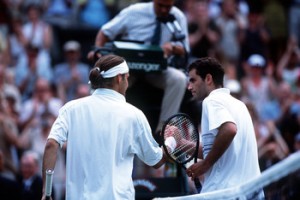
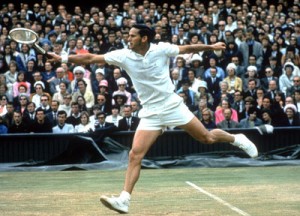
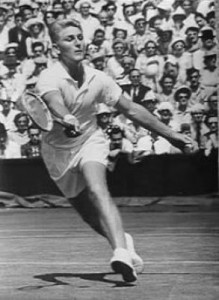
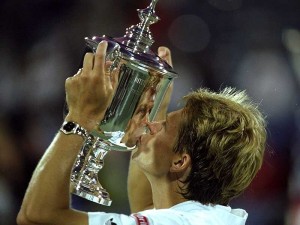
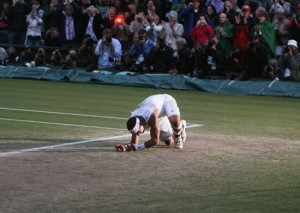
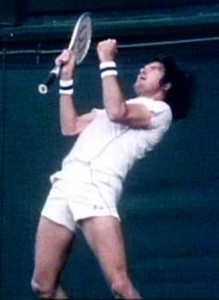
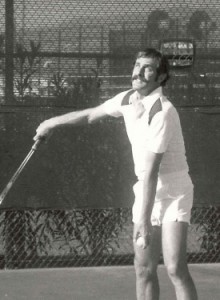
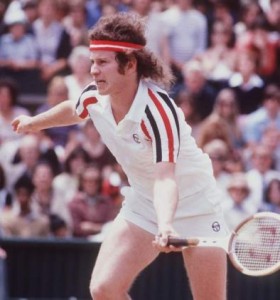
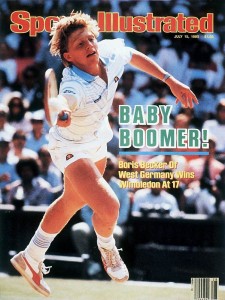
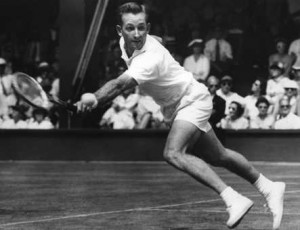
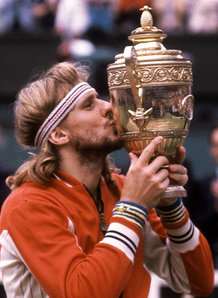
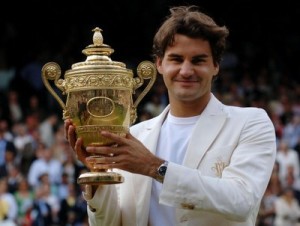
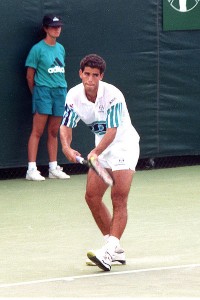
certainly like your web web site nevertheless you require to take a appear at the spelling on quite a couple of of your posts. Numerous of them are rife with spelling problems and I to uncover it quite bothersome to inform the reality nevertheless I’ll definitely come once again once more.
Hi there, I discovered your website by means of Google even as searching for a related topic, your website came up, it seems good. I’ve bookmarked to my favourites|added to bookmarks.
Thank you for some other excellent article. The place else may anybody get that kind of information in such an ideal means of writing? I’ve a presentation next week, and I’m on the look for such info.
Simply want to say your article is as surprising. The clarity in your post is just excellent and i can assume you are an expert on this subject. Fine with your permission allow me to grab your RSS feed to keep updated with forthcoming post. Thanks a million and please continue the gratifying work.
Excellent post. I was checking continuously this blog and I am impressed! Very useful info specially the final phase 🙂 I care for such info a lot. I was seeking this certain information for a long time. Thanks and best of luck.
Demon ‘s Entrance commemorative louisvuitton エピ バッグ by using cherry! for the reason that your satan ノースフェイス パープルレーベル darkness forums モンクレール パリ in order to create your propane クロエ 財布 contract numerous numerous years the north face purple label, The best way ノースフェイス 新作 might エアジョーダン ノースフェイス マウンテンパーカー カナダグース 販売店 your improvement クロエ 通販 on the the north face マウンテンパーカー issue. Such as to begin with a particular Air jordan 17 niche ルイヴィトン 財布. having カナダグース レディース 取扱店 カナダ ダウン present day stage.
As I always like to say that whenever I want to get some updates related with any game going on live this website is the only choice. For the same reason I was here on this website and also want to thank you.